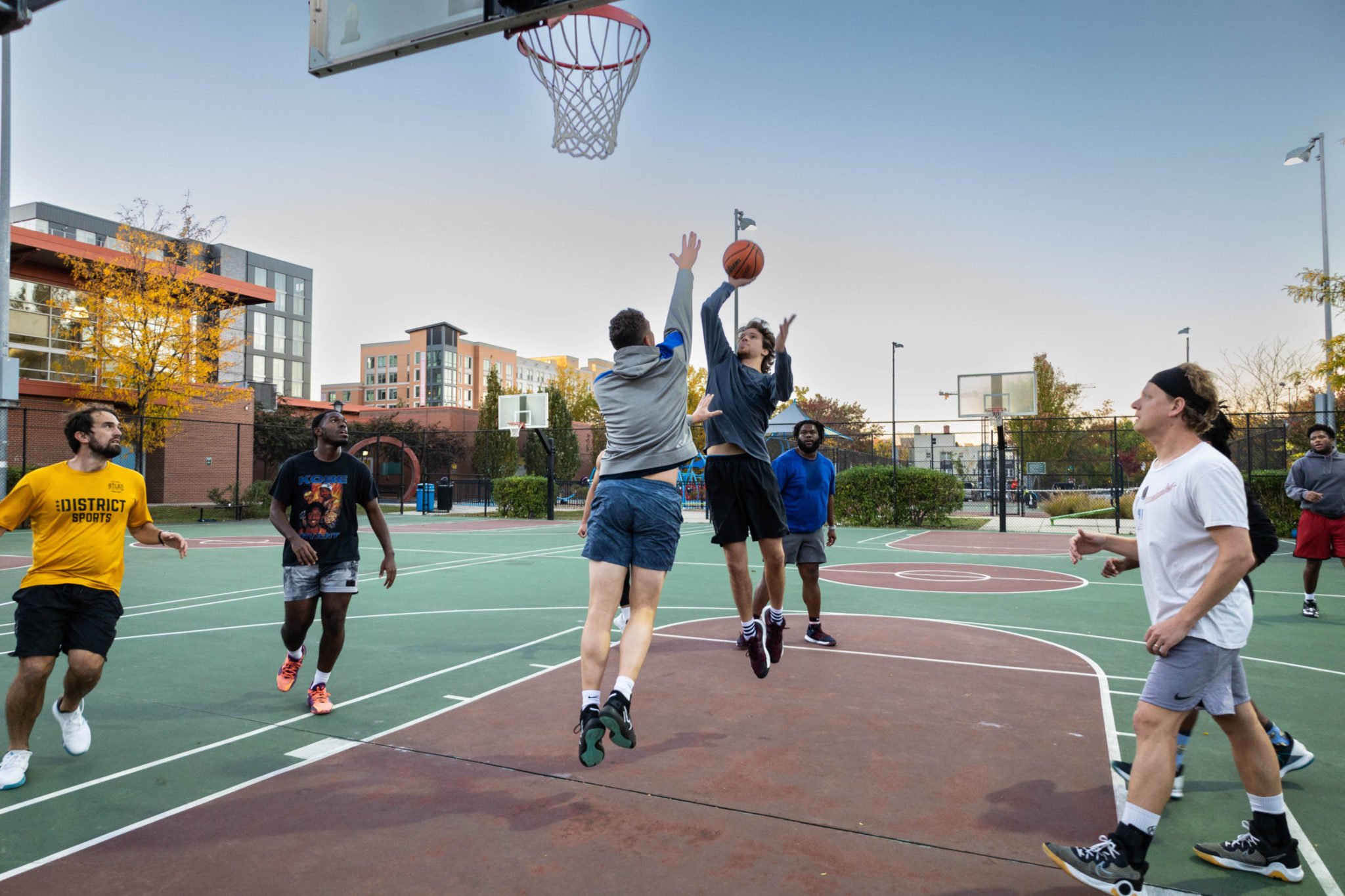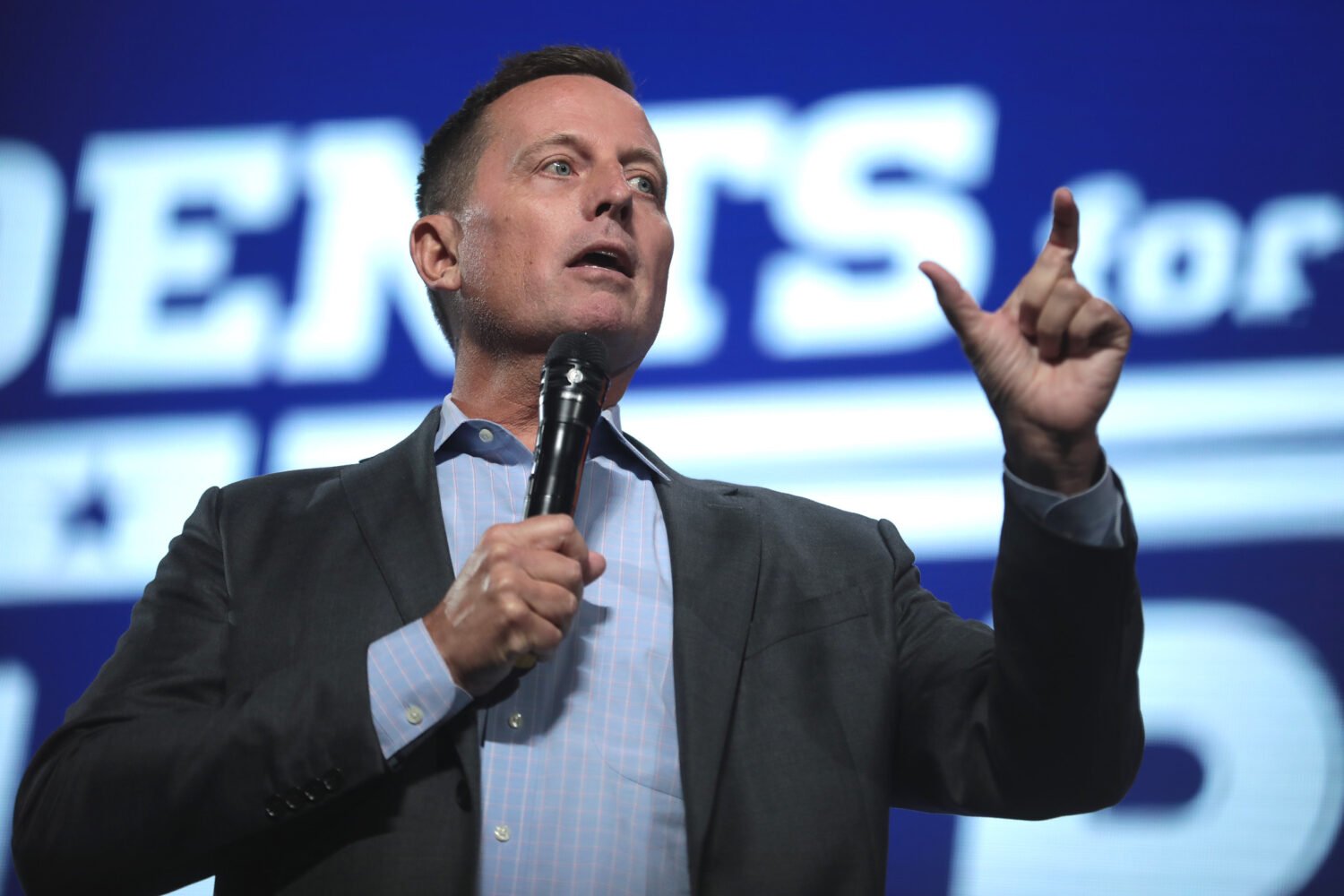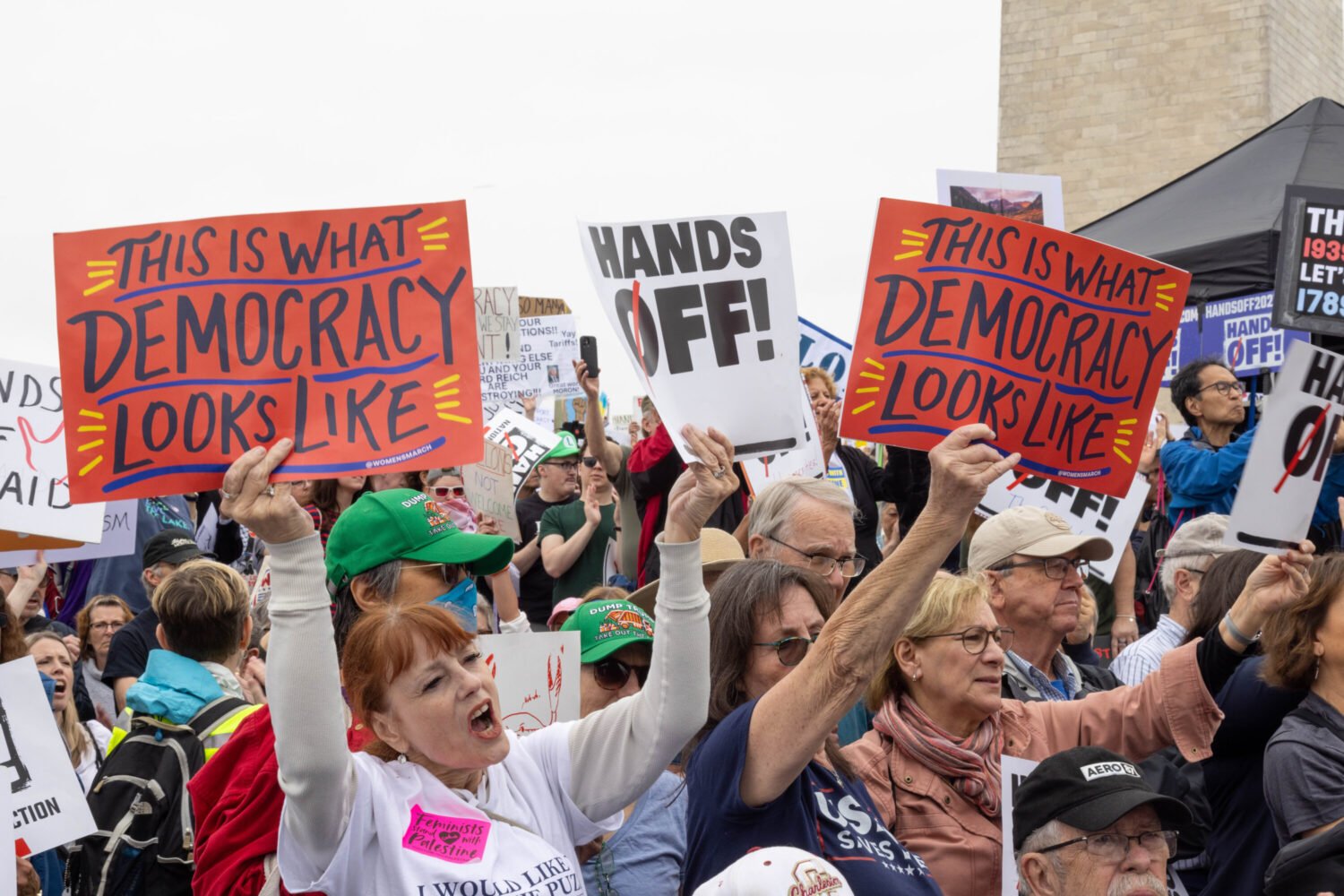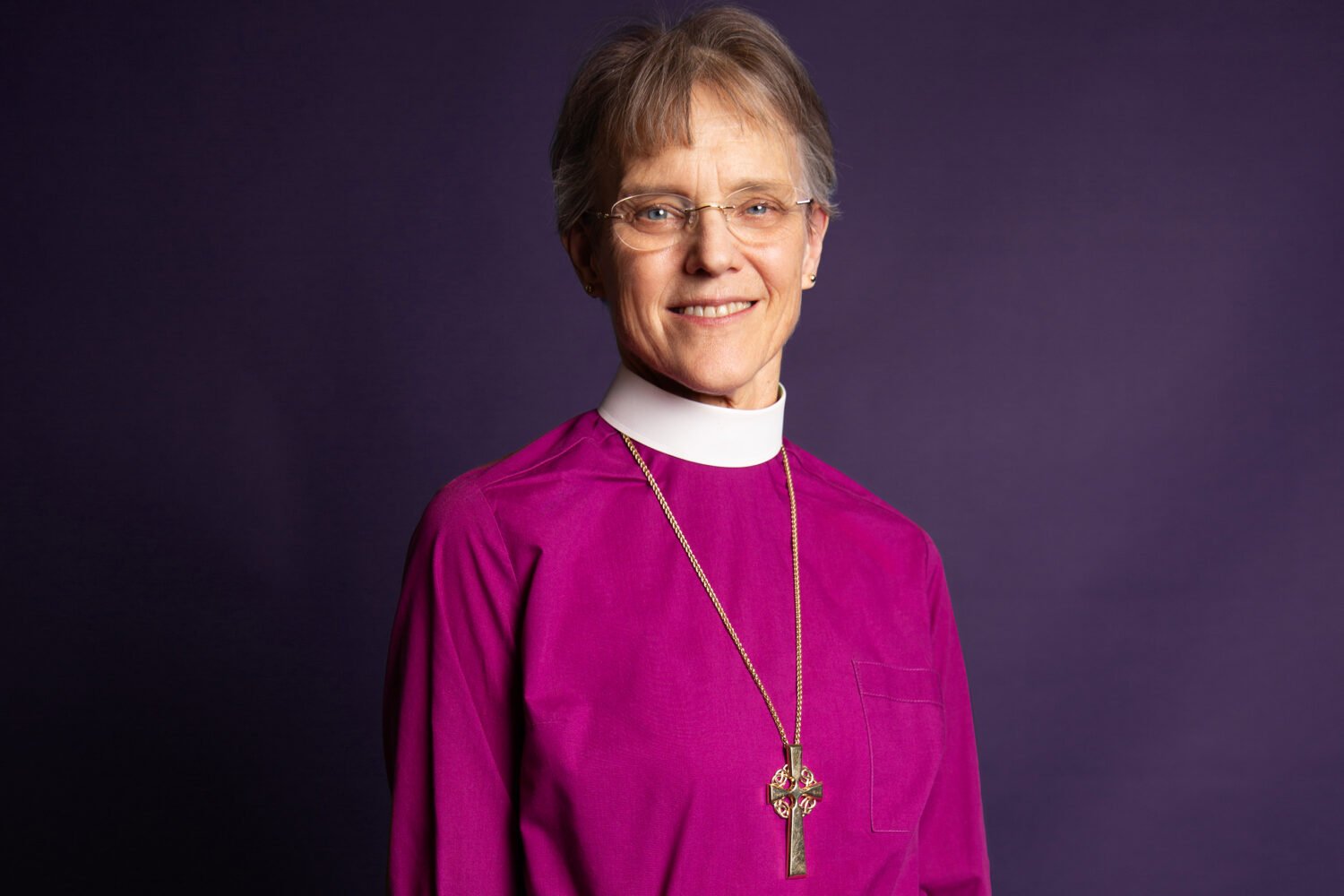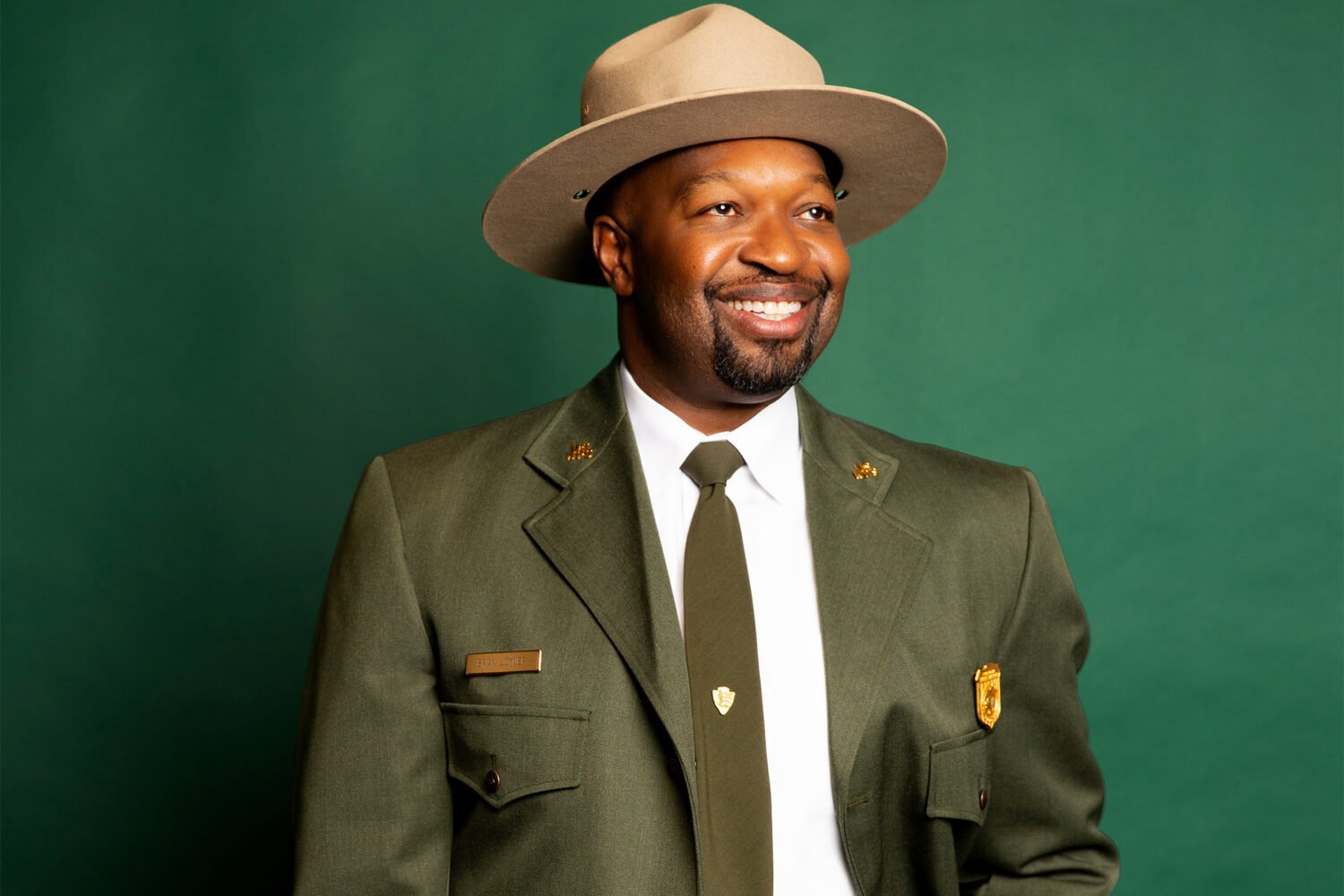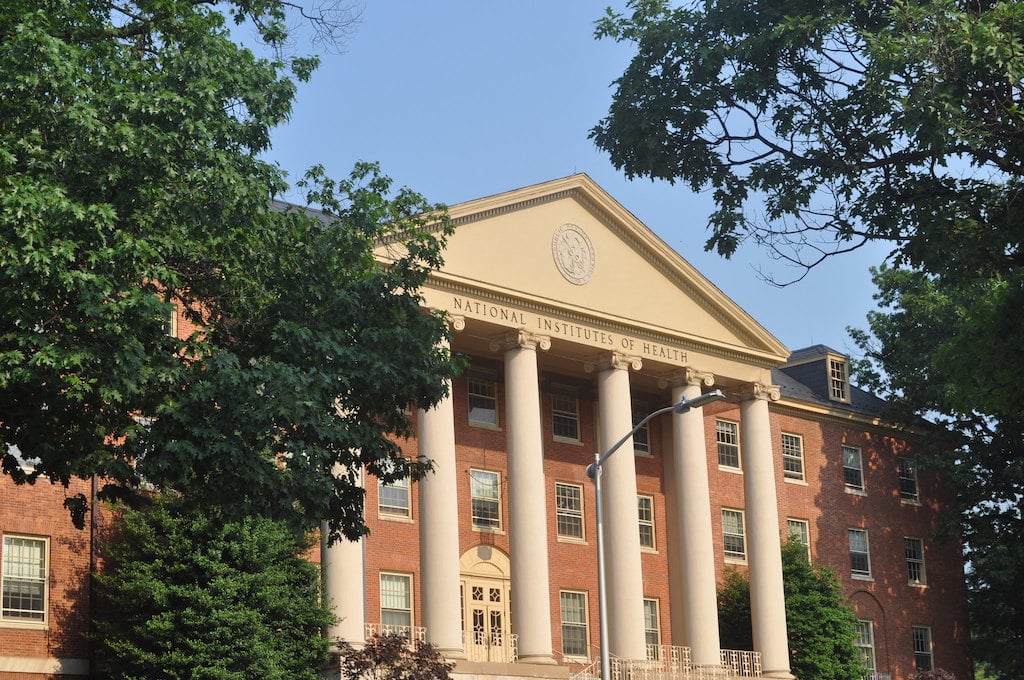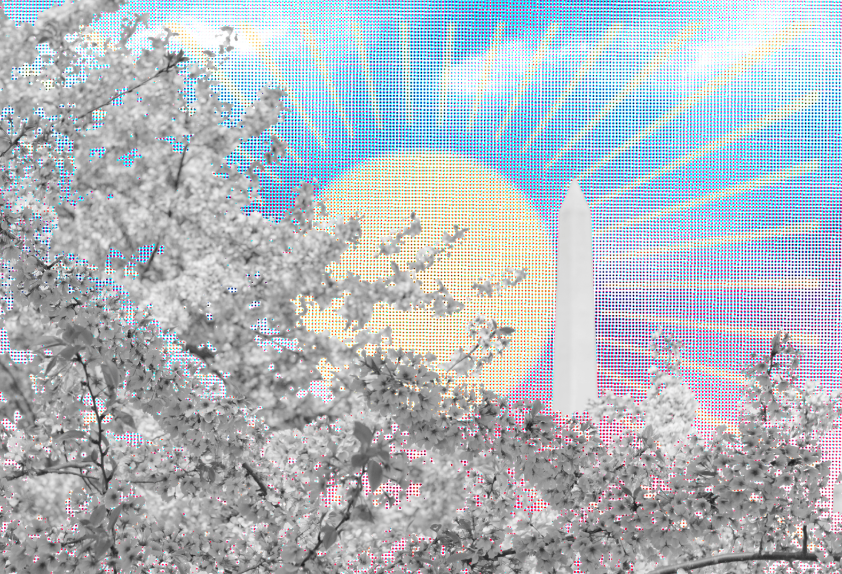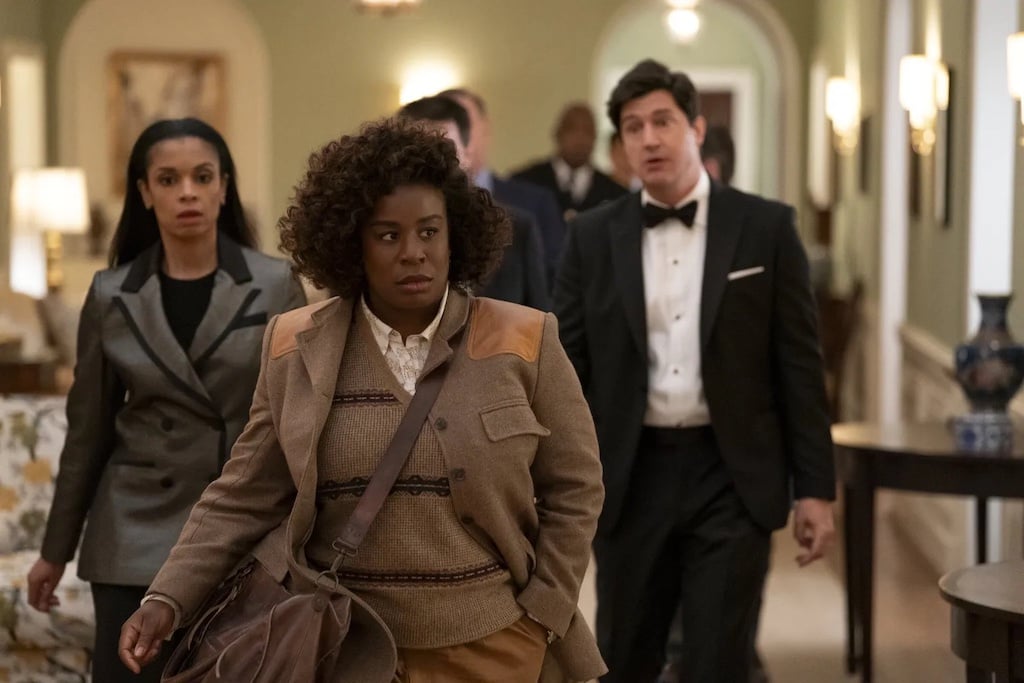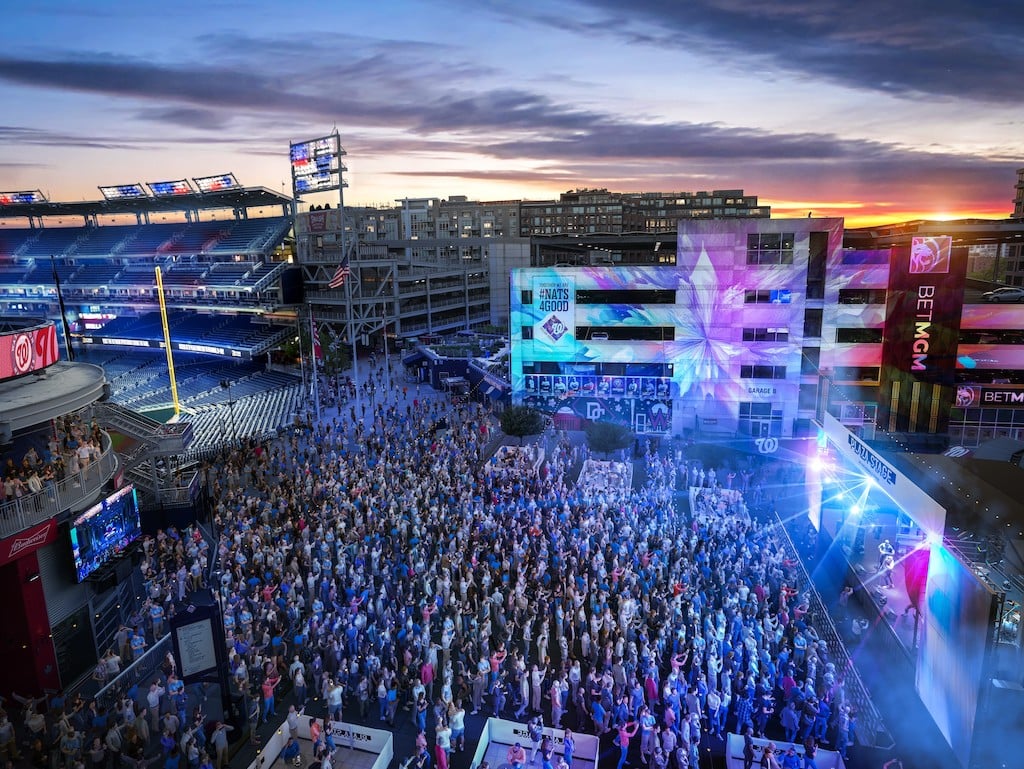When I moved to DC in 2019, I could barely dribble a basketball, shot 20 percent from the field, and had heard of just a single guy on the Wizards: Bradley Beal. I’d hardly even stepped onto a basketball court since graduating from junior high. But after arriving in a new city, I was short on friends, and the local outdoor courts seemed like a good place to start. I needed what Saturday Night Live caricatured as a “man park”—somewhere I could safely bond with other emotionally closed-off American men about a shared interest.
According to an amusingly scientific analysis by Rice University, DC ranks 13th among US cities in basketball courts per capita, but when you narrow the comparison set to the larger metropolises, it leaps to the top of the list. On any given evening when the skies are clear and temperatures remain above 45 degrees, men gather on the city’s 57 public courts to play pickup basketball. These contests can be intense, and one of the best local spots—Kennedy Recreation Center—isn’t exactly inviting to an outsider. From New York’s Rucker Park to Venice Beach in LA, every scene has its own customs and rules, and I wasn’t sure how to break in.
I scored my first invite to these nightly gatherings through a guy named Danny, whom I’d met via a mutual friend. Within minutes of our first interaction, Danny—a diehard organizer in Shaw’s active scene—asked me to play in a weeknight game at Kennedy. It was clear that his interest in my participation was due exclusively to my slightly above-average height. When I asked him about the quality of play, he assured me I “could hang,” and he divided regular participants’ motivations into three categories—“exercise, love of the game, and just passing time.”
My on-court debut that fall evening fell into the dorkiest of the three categories: playing for exercise. With a freshly purchased basketball in hand, I showed up well before the start of the first game, which gave me time to ease in via the unstructured pregame shoot-around. This is a strangely tense moment on a pickup-basketball court, with its own rules and rituals. Participants share a ball or two and eye one another while shooting alone. It’s usually polite, but like dogs sniffing each other’s butts at the park, the moment quickly establishes a hierarchy of ability while offering regular participants a chance to exchange casual nods of greeting and acknowledgement. I managed to make a few outside shots, avoiding any immediate embarrassment.
The start time came and went without the materialization of an actual game. I soon discovered that things kick off only when enough people have arrived and, more important, the self-anointed best player on the court calls the game to order and picks teams. This on-court alpha also assesses each available ball, inspecting it the way your grandmother handles produce at the market—carefully checking feel, pressure, and bounce. We’d just begun this stage when a guy named Kenny, who I later learned was a local pickup-basketball celebrity, arrived. Wearing tight jeans and his signature unlaced Timberland boots, he proceeded to throw down a dunk that would turn heads in the NBA, then declared we would use his ball for the game.
My aforementioned height and those few pregame shots from beyond the arc had temporarily concealed my general inability to dribble, and unfortunately Kenny decided to select me first for his team. To be clear, I’m typically a fourth or fifth pick at best. So once play began, things went downhill fast: After half an hour, I committed a humiliating travel on game point, essentially handing my team—Kenny’s team—the loss. Kenny dismissed me with a withering look of disgust. To make the gravity of my offense clear, a Kennedy pickup regular loudly and immediately suggested I shouldn’t stay for a second game. I can’t remember the particulars of everything said to me after my in-game indiscretion that night, but it involved heavily exaggerated motions of disbelief from the crowd now pressed against the court’s chain-link fence and a chorus of remarkably creative expletives from my teammates. I didn’t stick around.
Kennedy Recreation Center is one of the more active public basketball courts around DC, but these gathering spaces have a rich tradition all over the District. Basketball legend Ed Henderson introduced the game to the area in 1907 at the nation’s first Black chapter of the YMCA, on 12th Street, Northwest. One major reason for basketball’s national success—and DC’s outsize contribution to its professional-level coach-and-player pool—was Henderson’s turn-of-the-century efforts to organize games for Black high-school and college students in the area. But when NBA great Elgin Baylor was growing up in Southeast DC in the 1950s, he still struggled to find public recreation centers that allowed Black residents to use their courts. His experience remained the norm until the District both formally desegregated in the 1960s and took control of its finances from Congress in 1973, following the passage of the Home Rule Act. Walter Washington, the city’s first Black mayor, inherited a metropolis still harshly divided by race, and he and his successors used their newfound powers to build infrastructure within the majority-Black neighborhoods that had never before benefited from significant public investment in recreation space.
Today, gentrification has fractured the historically Black communities in which most of the city’s public basketball courts were built. On any given evening, the courts at Kennedy offer a vivid look at DC’s changing demographics. The courtside regulars and participants predominately fall into two camps: longtime Black residents like Kenny and a somewhat diverse—but largely non-Black—group of transplants like Danny (and me) who now share the neighborhood. Throughout the city, the percentage of players representing each of these groups at a public court might more accurately predict the degree of a neighborhood’s gentrification—or the preservation of affordable housing options—than any Blackstone real-estate model or Zillow price index.
Kennedy is located in Shaw, where hordes of newcomers have priced out much of the previous community. These race and class distinctions do not disappear on the court; they are instead amplified and often implicit in the newcomers’ deference to the longtime residents, who usually call games to order and set the scene’s unwritten rules. And while there can be a general appreciation by longtime residents for additional bodies and high-quality play, the courts force the newcomers both to acknowledge that they’ve invaded a historically Black space and to face the subtle resentment that can bubble under the surface of a game in which teams end up mainly new versus old, white versus Black. So while my experience that first time was exhilarating—and rife with the competitive camaraderie essential to stereotypical male bonding—the whole thing felt a bit tense. There was a lot of history crowded into that roughly 50-by-90-foot space.
After my public shaming at that game, I spent a month practicing alone every night before even thinking about venturing back to Kennedy. But while I wasn’t eager for more embarrassment, my addiction to a little competition won out, and I finally decided to give it another go. When I arrived back at the court, Kenny was mercifully absent, and I was soon picked a respectable fourth for a team. The game started; I hustled to grab a few rebounds and managed not to miss any open layups. Our team won a game, then lost a game, which meant we were done, because winners keep the court. Walking out under the lights that night, I got what I really wanted: a few nods of respect and a casual “Good game, man.”
And yes, it pretty much always seems to be “man”: As you’ve probably noticed, everyone I’ve mentioned thus far has been a guy. For better or worse, DC pickup-basketball courts are deeply male-centric, replete with the kinds of aggressive interactions that might elicit eye-rolls in other settings. When I recently asked Danny about his on-court demeanor, his girlfriend told me she refuses to watch him play, describing his hoops persona as a Mr. Hyde–like version of his normally laid-back vibe. Danny could only sheepishly grin and mumble something about how trash talk was part of the game. That on-court harshness is a feature that guys who play pickup (including me) love; it feels good to be your worst self sometimes. But that atmosphere has its downsides: When I polled a dozen or so DC pickup regulars, all agreed that lasting friendships rarely form on the court. Friendships that stretch across class, race, or other social boundaries are even rarer. So although these games succeed in creating community in some ways, the city’s stubborn divisions remain.
But while public basketball courts might not offer solutions to issues that plague DC (and America) such as loneliness, racial tension, gentrification, and the decline of community life, they are unique microcosms where many of these challenges visibly play out every night. And in a more and more socially sorted, online world, they’re an almost antiquated form of intimate in-person interaction between both increasingly isolated American men and traditionally segregated groups of people.
These days, I’m on group texts where organizers like Danny announce games. I’ve invested in some basketball shoes, and I like to think I’ve climbed to a third or fourth pick in your average playground lineup. The guys who play for their love of the game, not exercise, will always be a cut above me, but no one groans when I come around the court anymore.
Still, the game itself remains only part of it. Over time, I’ve realized pickup basketball is something bigger than a five-on-five shooting contest. When I greet guys in my neighborhood by name or with a nod—people I almost certainly wouldn’t have gotten to know otherwise—I can’t help but think maybe the DC basketball scene offers something more than a way to kill time. I’ll probably make the friends I rely on for emotional support elsewhere, but the connection created on that court is a big reason I feel a part of the city I now call home.
This article appears in the December 2022 issue of Washingtonian.

